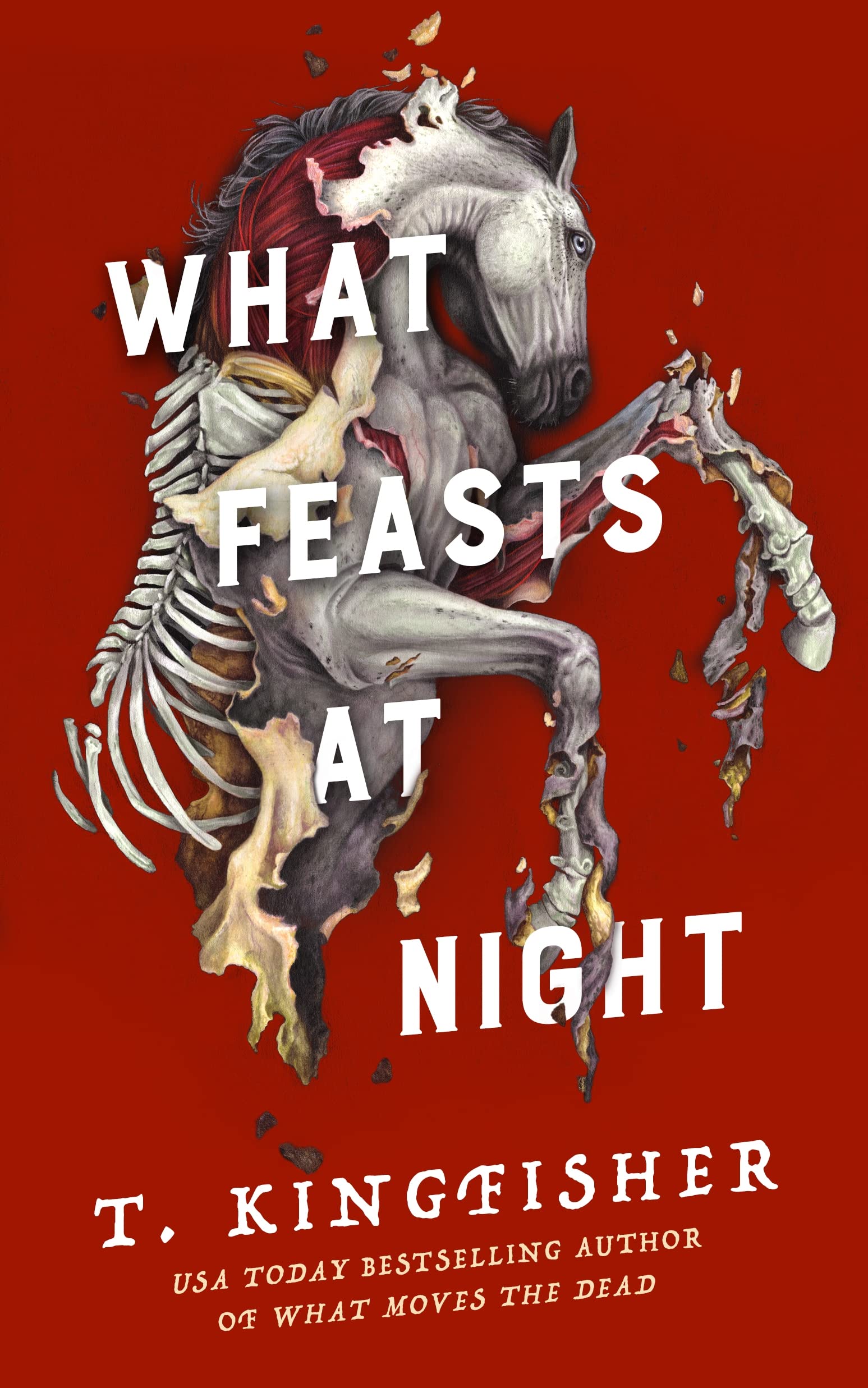- The Good: Nightmares in a creepy family hunting lodge
- The Bad: Not quite as scary as its predecessor
- The Literary: Traditional folklore focusing on a moroi, a ghost or vampire or succubus
Alex Easton, a retired soldier who recently survived a terrifying trial at the Usher Manor, returns to their family hunting estate, far in the forests of their home country Gallacia. They’re looking for rest and routine, but when Easton arrives, the caretaker is dead and the lodge and grounds in disarray.
We first met Easton in the Hugo-nominated novella What Moves the Dead, a fungal retelling of “The Fall of the House of Usher”. I enjoy Kingfisher’s subtle tweaks on gender all while introducing entirely new pronouns, but it’s the slow creeping atmospheric horror that shines.
I like What Feasts at Night even better than its predecessor, mostly because What Moves the Dead is a retelling of an already perfect story, whereas What Feasts at Night is entirely original. Sure, it’s based on traditional folklore, but it’s a smaller story, with an antagonist who comes in dreams, so it’s more psychological and isolating, particularly when it comes to Easton’s traumatic past battles.
The familiar folklore comes in two forms. First there’s the trip abroad to the home country, where villagers still believe in old superstitions. It’s an autumn that’s colder than usual, with a damp that’s difficult to banish from the home. Second, the monster, a moroi, is a breath-stealer, who comes at night.
Trusty valet Angus, British mycologist Miss Potter, and Alex’s beloved horse Hod join Easton on the trip to the family lands, and the secondary characters are memorable enough that I’m happy to see them again, especially Hod. In addition to the horror, the characters inject their own humor that eases the tension at just the right moments.
Be ready with a warm cup of comforting tea with this quite enjoyable fantasy horror.
